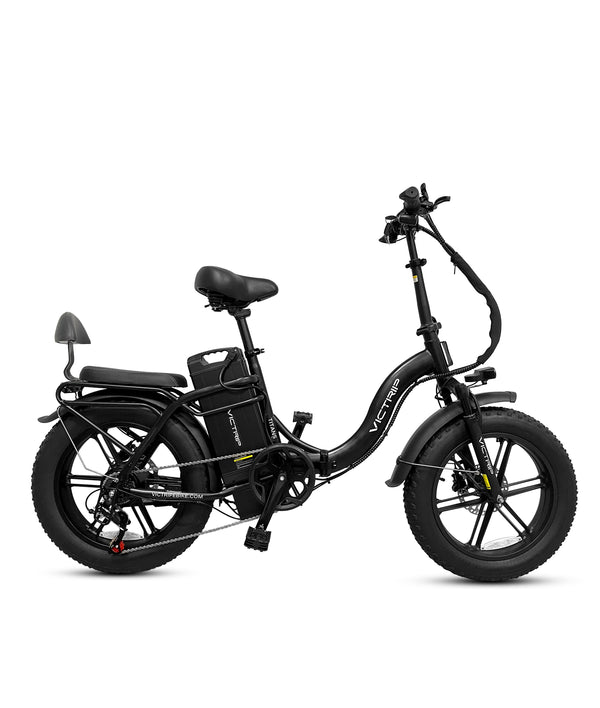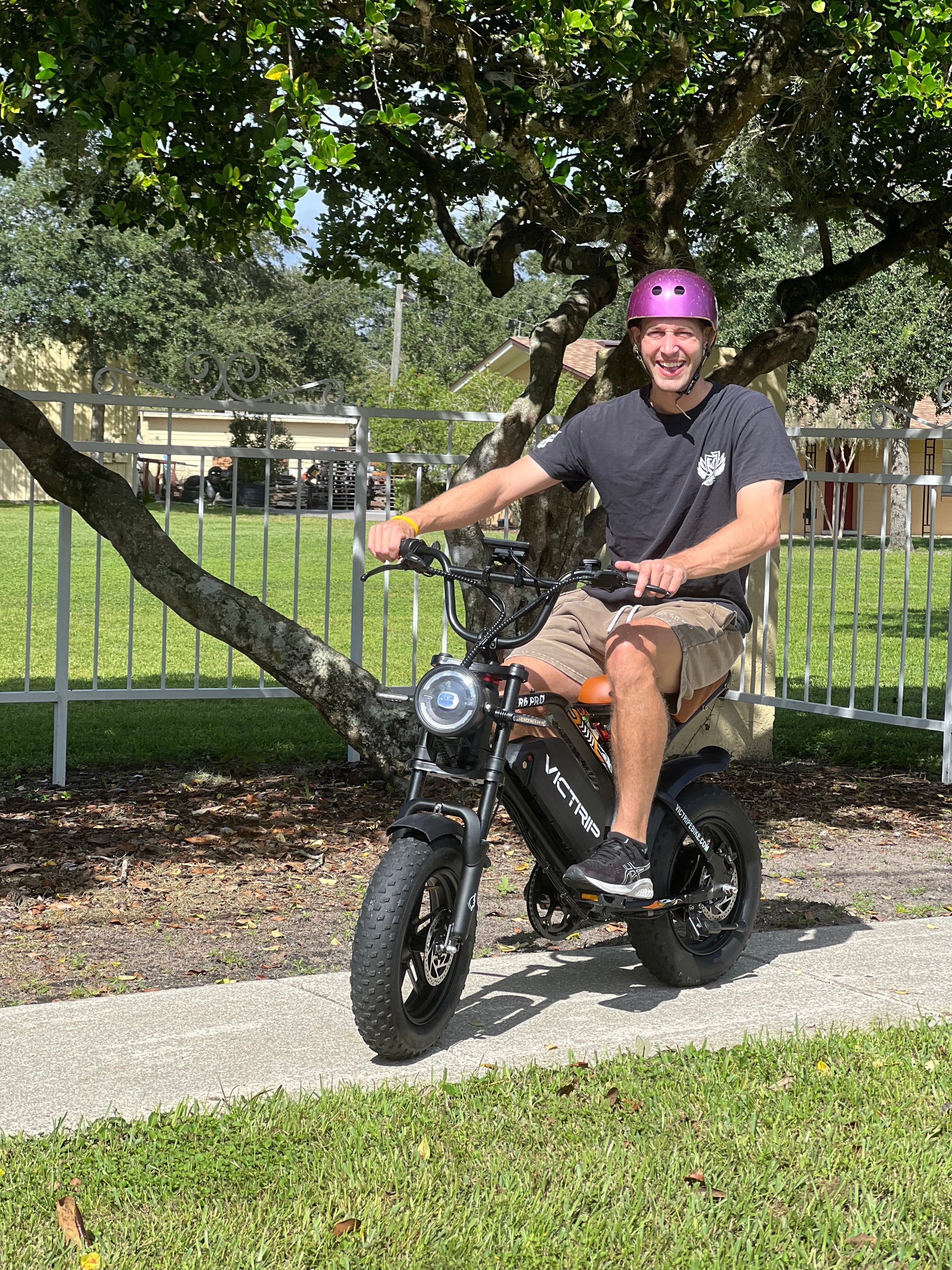
1000w vs 2000w e-bikes serve different riders. A 1000w e-bike is often the sweet spot for commuters and light-tourers who want strong assistance without overwhelming legal or maintenance burdens. A 2000w e-bike is for riders who prioritize raw power — steep hills, heavy cargo, off-road blasts — and accept trade-offs in weight, range, legality, and maintenance. Read on for a full breakdown so you can pick the right motor for your priorities.
How motor wattage is measured (1000w vs 2000w: the basics)
When people say “1000w” or “2000w,” they’re referring to the motor’s nominal or peak power rating, which describes how much electrical power the motor can consume (and translate into mechanical output). Nominal wattage is the continuous power the motor can sustain; peak wattage is the short burst power (used for initial acceleration). Manufacturers sometimes quote peak numbers because they sound impressive — so always check both nominal and peak specs.
For clarity:
-
1000w nominal: typically offers reliable sustained assist for urban and mixed-terrain use.
-
2000w nominal: delivers approximately double the continuous power, which affects acceleration, hill-climb ability, and top speed — but it also increases energy consumption and mechanical stress.
In practice, motor controllers, battery C-rating, wiring, and thermal management determine whether the motor reaches its rated power safely and consistently.
Performance comparison: acceleration, top speed, and torque
Power translates to three rider-visible traits: acceleration, top speed, and torque.
-
Acceleration: A 2000w system will accelerate faster from a stop, especially under load. That’s useful for off-road starts, steep driveways, or carrying a passenger. But the difference is most noticeable under high load — alone on flat ground, a skilled rider with a 1000w bike can still get quick starts.
-
Top Speed: Wattage helps overcome aerodynamic drag and rolling resistance. A 2000w bike can sustain higher speeds more easily, but speed is also limited by gearing and controller programming. Expect a realistic top-speed differential of 10–25% depending on setup and limits.
-
Torque: Electric torque affects how the bike responds climbing and when accelerating at low cadence. A 2000w motor produces higher torque at the wheel (assuming similar gearing), which feels more “forceful.”
Real-world example: on a 10–15% hill with a 90 kg rider + luggage, a 1000w motor might hold 8–12 km/h with heavy pedaling, while a 2000w system could maintain 15–20 km/h comfortably.
Battery & range implications
More power = more energy consumption. That simple rule drives many trade-offs.
-
Watt-hours (Wh): Range depends more on battery capacity (Wh) than motor wattage alone. A 1000w motor with a 1000 Wh battery may last longer than a 2000w motor with a 500 Wh battery. Always compare Wh not just voltage or Ah.
-
Energy use per km: Higher wattage often increases Wh/km, especially when you're using the higher power. If you ride aggressively (high assist, fast speeds, heavy loads), the 2000w system’s Wh/km will be significantly higher.
-
Thermal and peak draw constraints: 2000w systems require batteries and controllers that can safely deliver higher current. That raises cost and often battery weight.
Practical tip: If range matters, prioritize a larger battery (e.g., 700–1200 Wh) and efficient motor/controller pairing rather than choosing a higher-watt motor alone.

Climbing power and real hill performance
Here the differences are most obvious.
-
Grade and speed: A 2000w motor sustains higher speeds on steep grades with less rider input. For riders in hilly regions or those who regularly carry heavy cargo/passengers, the extra power feels transformative.
-
Rider weight sensitivity: Heavier riders benefit disproportionately from higher wattage. The heavier the total system (rider + cargo), the more useful extra motor wattage becomes.
-
Continuous vs. burst: Many steep climbs need continuous high power. Ensure the 2000w motor you pick can sustain the load thermally — otherwise you’ll see power tapering.
If you live in an area with sustained steep climbs, a 2000w-class bike often reduces strain and travel time—if you’re willing to manage the other trade-offs.
Weight, frame stresses, and ride handling
More power means mechanical stresses.
-
Bike weight: Motors, larger batteries, and beefier frames add weight — often 8–20 kg more. That affects handling, mounting, and portability.
-
Frame & component stress: Frames and forks designed for high power must be stronger. Cheap frames with 2000w motors can crack or fail if components aren’t specified for the power.
-
Ride feel: The extra weight and torque change cornering and braking behavior; heavier setups need stronger suspension and brakes.
Always choose a frame and components rated for your motor class — that’s the difference between a reliable ride and frequent repairs.
Legal and regulatory differences
This section is a high-level overview. Laws vary by country, state, and municipality — check local rules before you ride.
-
United States: Many states classify e-bikes by motor power and top assisted speed. Standard Class 1–3 e-bikes typically cap at 750W and 20–28 mph (regulated). A 2000w e-bike often falls outside these categories and may be treated like a moped or motor vehicle, requiring registration, insurance, or restricted riding areas.
-
European Union: Most EU countries restrict e-bikes to 250W (with assistance up to 25 km/h) for pedelecs. Anything above is often considered a small moped or S-Pedelec and faces stricter rules.
-
Other regions: Laws vary — some places allow higher-power e-bikes with speed governors or special permits.
Because legal status affects where you can ride and whether you need license/insurance, confirm local laws before buying a 2000w model for street use.
Read More: Do You Need a Driver’s License for an E-Bike in 2025? Full US Guide,
Safety, brakes, and component upgrades
Higher power requires better stopping and structural components.
-
Brakes: Upgrade to high-quality hydraulic disc brakes with larger rotors for 2000w setups.
-
Tires & rims: Heavier loads and higher speeds mean stronger rims and puncture-resistant tires.
-
Thermal management: For motors and controllers, look for good cooling (venting, heatsinks).
-
Lighting & signals: If you’ll be riding fast on public roads, strong lights and visible signaling are essential.
Don’t skimp on braking and structural upgrades when stepping up to higher wattage — safety first.
Use cases: commuting, off-road, cargo, touring
Which motor suits each use?
-
Urban commuting (flat to rolling terrain): 1000w — efficient, legal-friendlier, lighter. A model like the VICTRIP Titan S 1000W Long Range E‑Bike is often more pragmatic: it's powerful enough for most urban rides yet easier to handle in terms of battery usage, weight, and possibly legal restrictions.
TOP PICK

VICTRIP®TITAN S 1000W Ebike
$1,499.00
-
Hilly commute / heavy cargo: 2000w — better sustained performance under load.
-
Off-road and trails: 2000w — more reserve power for technical sections; ensure trail legality. The VICTRIP Surnat N12 2000W Electric Bike could provide the extra power you need to maintain speed and reduce strain — at the expense of higher energy use, handling weight, and regulatory considerations.
-
Touring / long-range: 1000w with large Wh battery is typically better for predictable range and lower maintenance.
-
Cargo or tandem use: 2000w often makes carrying heavy items practical without overheating.
Match motor choice to typical ride profile, not occasional needs.
TOP PICK

VICTRIP®SURNAT N12 2000W Electric Bike
$999.00
Cost, reliability, and long-term ownership
Upfront price and ongoing costs differ.
-
Initial cost: 2000w systems often cost more because of stronger motors, controllers, and higher-current batteries.
-
Maintenance: Higher currents accelerate wear on connectors, chains, and drivetrains. Expect more frequent servicing.
-
Resale & insurance: High-power bikes may have lower resale and higher insurance/registration costs depending on local rules.
If total cost of ownership matters, factor in maintenance and legal compliance, not just sticker price.
Modifications, tuning, and warranty considerations
Many riders tune controllers, change gearing, or fit aftermarket batteries. A few cautions:
-
Warranty: Tuning to exceed manufacturer specs often voids warranties.
-
Controller tuning: Can unlock performance but stresses battery and motor.
-
Software limits: Some bikes use governors that can be reprogrammed; be aware of legal implications.
If you plan mods, buy components designed for the power level, or work with a reputable e-bike shop.
Environmental and energy considerations
Higher wattage consumes more energy per km, but context matters.
-
Efficiency: A 1000w e-bike can be more energy-efficient for moderate use.
-
Lifecycle impact: Bigger batteries and heavier builds increase embodied energy (manufacture and transport).
-
Use-case offset: If a 2000w bike replaces car trips that would otherwise happen, the net environmental impact can still be positive.
Think holistically about energy, not just motor wattage.
How to choose: guided checklist
-
Where do you ride most (flat / hilly / mixed)?
-
Typical rider + cargo weight?
-
Desired cruising speed?
-
Legal environment (local e-bike laws)?
-
Battery capacity you need (Wh)?
-
Maximum acceptable weight (kg)?
-
Budget for upfront cost and maintenance?
-
Need for off-road capability?
-
Desire to modify or keep stock?
-
Comfort with higher-speed/ power handling?
Answer these in order — that will usually point you to 1000w or 2000w.
Step-by-step buying and test-ride plan
-
Inspect frame & build quality.
-
Check motor nominal & peak wattage, battery Wh.
-
Ask for real-world tests with your weight + cargo.
-
Test starting, climbing, and sustained speed.
-
Listen for abnormal noises and watch for thermal cutouts.
-
Validate brakes and lights.
-
Confirm warranty and local legal compliance.
Bring a checklist and a friend — it's worth it.
Conclusion
Choosing between 1000w vs 2000w e-bikes is about matching capability to real needs. If your daily rides are urban, legal constraints are a concern, and range/efficiency matter, a 1000w e-bike is often the better, more pragmatic choice. If you regularly haul heavy loads, conquer steep terrain, or seek off-road domination — and you accept the costs in weight, battery demand, legal checks, and maintenance — a 2000w e-bike will deliver the performance you need.
In short: pick the motor that fits the majority of your rides, not the extremes. Test ride both if you can, inspect component quality, and confirm local regulations before committing.
FAQs
Are 2000w e-bikes legal on public roads?
It depends on your jurisdiction. Many regions limit e-bikes to 250–750W for standard bicycle classification. 2000w e-bikes commonly fall into moped/motorcycle rules, requiring registration or age limits. Always check local regulations.
Will a 2000w motor double my top speed compared to a 1000w?
Not necessarily. Top speed depends on gearing, controller limits, and aerodynamics. A 2000w motor helps sustain higher speeds and accelerate faster, but it won't automatically double top speed.
Do I need a different battery for a 2000w motor?
Yes — a 2000w motor typically draws higher current, so you’ll need a battery with higher continuous discharge (C-rating) and likely higher Wh to achieve comparable range.
Which is more reliable long-term, 1000w or 2000w?
Reliability depends on build quality and spec matching. A well-engineered 2000w system with proper cooling and components can be as reliable as a 1000w system — but low-quality high-power kits are more failure-prone.
Can I convert my 1000w e-bike to 2000w?
Technically possible, but it often requires changing motor, controller, battery, and reinforcing frame/components. It may void warranties and breach local laws — assess costs and legality first.
Which is better for touring long distances?
For predictable long-range touring, a 1000w motor paired with a large capacity battery (800–1200 Wh) tends to offer better efficiency and fewer mechanical complications.




Share:
26 Inch EBike for What Size Person? A Complete Guide
Moped EBike vs Traditional Scooter: Which One Saves You More Money?